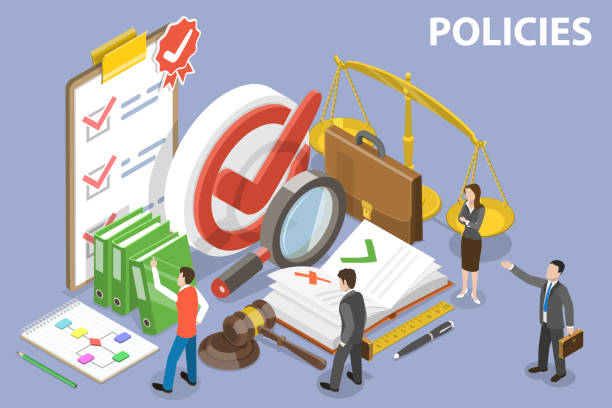Choosing the right insurance coverage can feel overwhelming, especially with the variety of policies available, each catering to different aspects of your life and financial well-being. The goal of insurance is to protect you from significant financial losses in the face of unexpected events, but how much coverage do you really need? Too little coverage can leave you exposed, while too much can strain your finances. Here’s a guide to help you understand the basics of insurance coverage and determine the right amount for your unique needs.
1. Health Insurance
Health insurance is one of the most essential types of coverage, protecting you from the high costs of medical care. Without adequate health insurance, a single medical emergency can lead to overwhelming debt.
How Much Health Insurance Do You Need?
- Consider Your Health Needs: Assess your current health status and medical needs. If you have chronic conditions or require frequent medical attention, look for a plan with lower out-of-pocket costs.
- Evaluate the Deductible and Out-of-Pocket Maximum: Choose a deductible you can afford. Lower deductibles mean higher premiums, so finding the right balance between monthly premiums and deductible levels is essential.
- Check Coverage for Essential Services: Ensure that services important to you, like preventive care, specialist visits, and medications, are adequately covered. If you have a family, consider plans that offer comprehensive pediatric care.
- Out-of-Network Coverage: If you travel frequently, consider plans with extensive networks or ones that cover out-of-network services to avoid unexpected costs.
For most people, a health plan that covers essential services with a reasonable deductible is sufficient. However, if your health needs are more complex, you may need to pay higher premiums for more comprehensive coverage.
2. Auto Insurance
Auto insurance is required by law in most states, but the minimum requirements might not provide adequate protection in case of an accident. Auto insurance includes several components: liability, collision, comprehensive, uninsured motorist, and personal injury protection.
How Much Auto Insurance Do You Need?
- Liability Coverage: Liability coverage is essential as it protects you if you cause injury or damage to another person or their property. Most experts recommend carrying at least 100/300/100 coverage—$100,000 per person for bodily injury, $300,000 per accident, and $100,000 for property damage.
- Collision and Comprehensive Coverage: If you drive an expensive or newer vehicle, collision and comprehensive coverage can protect you from repair or replacement costs if your car is damaged or stolen. However, if your car is older or has a low market value, you might opt out of these coverages to save on premiums.
- Uninsured/Underinsured Motorist Coverage: This coverage is crucial, as it protects you if you’re hit by a driver without adequate insurance. Many states require it, and it’s especially valuable in areas with high rates of uninsured drivers.
For the average driver, comprehensive liability coverage with collision and uninsured motorist protection provides a solid foundation, especially if you own a newer car. Adjusting these amounts can help you customize your policy based on the value of your vehicle and your budget.
3. Homeowners or Renters Insurance
Whether you own a home or rent, protecting your residence and belongings from damage or theft is vital. Homeowners insurance covers your property and belongings, as well as liability for injuries on your property, while renters insurance covers personal belongings and liability without covering the building itself.
How Much Homeowners or Renters Insurance Do You Need?
- Dwelling Coverage: For homeowners, the dwelling coverage should equal the estimated cost to rebuild your home, not its market value. Your insurance agent can help estimate this amount, considering the cost of materials and labor in your area.
- Personal Property Coverage: Personal property coverage should cover the value of your belongings. Taking an inventory of your possessions can help you estimate this accurately. For renters, personal property coverage is the core of your policy.
- Liability Coverage: Liability coverage is essential, especially for homeowners. Most experts recommend carrying at least $300,000 in liability coverage to protect against lawsuits if someone is injured on your property.
- Additional Living Expenses (ALE): ALE covers costs if you need to live elsewhere temporarily due to damage to your home. Make sure your policy includes enough ALE to cover potential lodging and living costs for several months.
For most homeowners, adequate dwelling, personal property, and liability coverage are crucial. Renters should focus on personal property and liability coverage, as the building structure is covered by the landlord’s insurance.
4. Life Insurance
Life insurance provides financial protection for your loved ones in the event of your death, covering expenses like funeral costs, outstanding debts, and ongoing living expenses for dependents. The amount of life insurance you need depends largely on your personal circumstances, such as income, family needs, and outstanding obligations.
How Much Life Insurance Do You Need?
- Cover Outstanding Debts: Calculate any outstanding debts, including mortgage, student loans, or car loans, that your family would need to pay off if you were no longer around.
- Income Replacement: A common rule of thumb is to purchase a policy worth 5-10 times your annual income. This can provide your family with enough funds to cover living expenses and maintain their current lifestyle.
- College Funds and Future Expenses: If you have children, consider additional coverage to help cover future educational expenses or other financial goals.
- Policy Type: Decide between term life insurance, which offers coverage for a set number of years, or whole life insurance, which covers you for life and includes a cash value component.
For most individuals, a term policy that covers income replacement and outstanding debts is sufficient. However, if you have lifelong dependents or specific long-term financial goals, a whole life policy may offer more comprehensive protection.
5. Disability Insurance
Disability insurance protects your income if you’re unable to work due to illness or injury. With nearly one in four workers experiencing a disability before retirement, disability insurance is crucial for anyone reliant on their income.
How Much Disability Insurance Do You Need?
- Income Replacement: Look for coverage that replaces at least 60-70% of your income. This is generally enough to maintain your lifestyle without undue financial strain.
- Short-Term vs. Long-Term Disability: Short-term disability coverage typically lasts three to six months, while long-term disability coverage can last until retirement age. If your employer offers short-term disability, you may only need to purchase long-term disability coverage.
- Waiting Period: Most policies have a waiting period before benefits kick in. Choose a waiting period that aligns with your savings and emergency fund to keep premiums manageable.
For most individuals, a long-term disability policy that replaces a substantial portion of income provides essential protection.
Final Thoughts
Choosing the right amount of insurance coverage is all about finding a balance between protecting yourself from significant financial losses and maintaining affordable premiums. Each type of insurance—health, auto, homeowners/renters, life, and disability—plays a role in securing your financial future. By assessing your specific needs, budget, and lifestyle, you can select coverage that provides peace of mind and protection for the unexpected, helping you achieve a more secure financial future.

